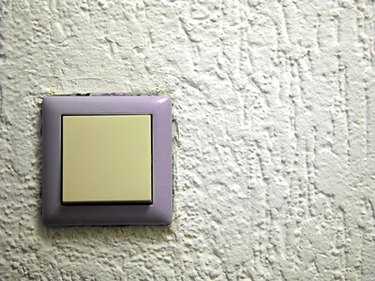
Switches change an electrical circuit by making or breaking a contact. Usually, the switch makes a change that stays in effect until the switch is used again. For example, a light switch turns the lights on (or off) and they stay on (or off) until the switch is used again. Momentary switches are different--their effect lasts only as long as your finger is on the switch. One common example of a momentary switch is a doorbell. The doorbell only rings while you are pressing the button.
Function
Video of the Day
Momentary switches are for occasions where you want to change a circuit only while you are interacting with it. Doorbells fit this model; so do push-to-test buttons. For more permanent long-term changes, a momentary switch would be inappropriate--for example, when you turn the radio or TV on, you want it to stay on until you decide otherwise.
Video of the Day
Types
Some momentary switches--such as doorbells--make a circuit when you activate them. The newly established circuit sends energy to the ringer. Some momentary switches--such as a burglar alarm test switch--break a circuit. This broken circuit simulates momentarily the effect of a broken window.
Construction
Momentary switches almost always contain springs. A momentary switch like a doorbell that is normally open has a spring holding the contacts apart. When you press the button, you overcome the spring and press the contacts together. Momentary switches that are normally closed have a spring holding the contacts together. When you press the button, you overcome the spring and force the contacts apart.
Time Frame
Momentary switches allow you to precisely time your interaction with a system. A push-to-close momentary switch, for example, would allow you to control a saw until it cuts to the required depth, then stop it by releasing the switch. Another example is a push-to-open momentary switch, which would allow you to cut the fuel supply to an airplane engine until the moment it starts to stall, then restart it by releasing the button.
Warning
All electrical components must be chosen with power, voltage and current ratings in mind. Like all switches, momentary switches provide an excellent opportunity for electrical shock, because this is the one component you are likely to touch. If the power is going to be large, consider using a relay and controlling the relay with a momentary switch.